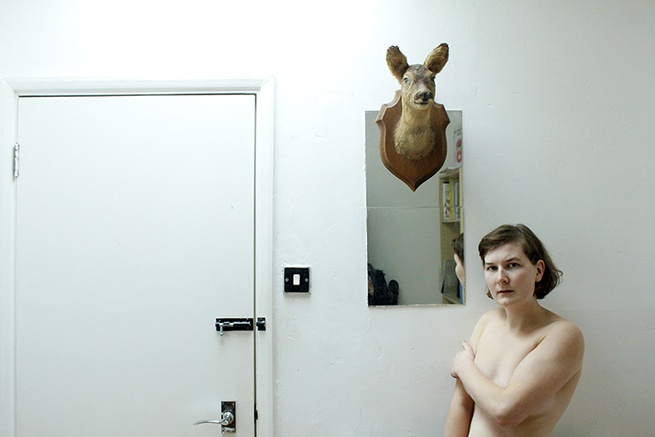
Beatrice-Lily Lorigan
b. 1992, London
2012-2015 BA Fine Art and History of Art, Goldsmiths University, London
Recent Exhibitions
Group shows:
2015 ‘You Have Got My Bone’, Foyles Bookshop, London
2014 ‘#TALKTOEACHOTHER’, Hotel Elephant, Miami Art Basel, London
2014 ‘Post Post Christmas’, Stoke Newington Gallery, London
2014 ‘Post Christmas’, Stoke Newington Gallery, London
2013-2014 The 3G Collective Monthly Events, Amersham Arms, London, Star & Garter, London, Fox & Firkin, London
2012 ‘Dark Inspiration’, The Flying Dutchman, London
Artist’s Statement
"Beatrice-Lily's work challenges presumptions and assumptions of sex, gender, and perceptions of 'other' bodies, and embraces ambiguity to proclaim a renegotiation of control over personal identity. The breakdown of so-called ‘gender binaries’ opens up possibilities of pleasures both in sex and in one’s self that transcend traditional notions of sexual orientation and bodily sex.
Using photography to explore personal sexual expressions within a domestic setting, these images expose the intimate and complex web of identifications that comprise human individuality. By using the body as a place of play and experimentation, not only in art but in sex, we alter our bodily relations to ourselves as we look to a humanity that is post-gender.
The work is consciously evocative of the nude portrait tradition and the power game enacted through the subject/spectator gaze. However, in a departure from the art historical canon, these visual tropes become manipulated in order to communicate an expanded notion of gender. Far from endorsing patriarchal constructions of 'male' and 'female', the photographs unpack notions of gender binaries and the post-human. The coinciding obliteration and confusion of tell-tale body parts and gendered motifs make difference suggested but not obvious, and forces an androgynous engagement with the portraits.
The notion of the muse and The Male Gaze comes into play; being the object of visual desire, available for the leering and lusts of countless strangers. These images demand that the classical canon be widened to allow for every nude of every body, and the first, veiled image is reminiscent of Orientalist harem photos, so fits in an entirely different canon of ‘Othered’ eroticism.
These works explore gender, trans-gender and post-gender, yes, but so much more than that in terms of what it means to be naked, what it means to be at home, what it means to be queer, what it means to be intimate, or alone, and what it means to be a human.





